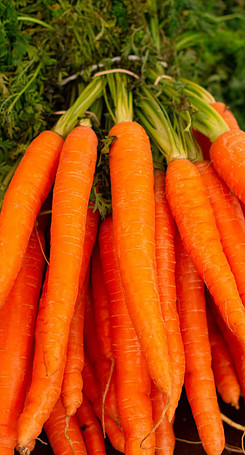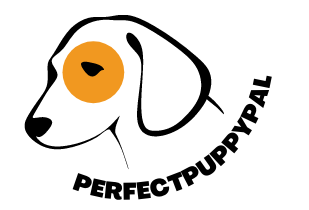Can Dogs Safely Eat Carrots?
Carrots are often touted as a healthy food for humans, but can the same be said for our canine friends? You will be happy to know that the answer is a resounding yes! Carrots are an excellent source of vitamins, minerals, and fibre, and they offer a variety of health benefits for our canine companions.
At perfectpuppypal.com, we are not qualified veterinarians or animal nutritionists. The information that we provide is general and educational information only and is not a substitute for professional advice.
Let’s delve in a little deeper and explore the subject of can dogs safely eat carrots in more detail, shall we!
What are the benefits of feeding carrots to your dog?
Carrots are a healthy and nutritious treat for dogs. For instance, carrots can help to improve dental health, since the crunchy texture helps to remove plaque and tartar from teeth. Because of their ‘crunch factor’, carrots are often used as a healthy training tool for our four-legged friends too.
Carrots are also rich in beta-carotene, an antioxidant that can help to protect against cancer, which is converted to vitamin A in the body. Vitamin A is important for vision, bone growth, reproduction, and cell division. It can also help to boost the immune system as well.
Carrots are also low in calories and fat and are jam-packed full of vital vitamins, minerals, and fibre. On top of this, they are also a good source of potassium, calcium, and magnesium too!
These minerals are essential for heart health, bone health, and muscle function. Feeding carrots to your dog can help to improve their overall health and well-being. What’s not to love about carrots?
Are there any dangers when feeding carrots to your pup?
We have covered why carrots are a healthy treat for dogs and they are generally safe for dogs to eat. But, as with all foods we feed our pups there are a few things to keep in mind.
Firstly, carrots can be a possible choking hazard, especially when fed raw for smaller breeds of dogs, so we would always recommend chopping them up into small pieces or grating them before feeding. Of course, if you have a larger breed of dog, then you can get away with feeding them larger-sized chunks, but as always, just take care.
Secondly, too many carrots can lead to vitamin A toxicity, so it’s important to limit the amount you feed your dog. A good rule of thumb is one carrot per day for small dogs and two carrots per day for large dogs. If you think that your dog has eaten too many carrots and is vomiting, has diarrhea, a lack of appetite, or convulsions, then it is best to get to your vet right away.
As long as you’re aware of these possible dangers, feeding your dog carrots is a perfectly safe and healthy way to show your furry friend how much you love them!
What is the best way to feed your dog carrots, cooked or raw?
When it comes to feeding carrots to your dog, there are two schools of thought: raw or cooked. Each method has its own advantages and disadvantages.
Nutritionally speaking, surprisingly, studies have shown that cooked carrots are actually more nutritious than raw carrots! Also, cooking carrots makes them easier to digest and less likely to cause an upset stomach in your canine companion, and are also more likely to be palatable if you have a picky eater. So, if nutritional benefits are what you are after when feeding carrots as a tasty snack to your pup then boiling or steaming them for a few minutes is the way to go.
Don’t get wrong here, obviously raw carrots have a nutritional benefit too, just not as much as cooked ones. But, in terms of dental hygiene, raw carrots can help to clean your dog’s teeth and massage their gums, which is always a good thing right? However, as mentioned in the last section, please remember that raw carrots can also pose a choking hazard, so it’s important to cut them into small pieces before feeding them to your furry friend.
Ultimately, the best way to feed carrots to your dog is up to you, it all depends on what health benefits you wish your pup to profit from.
What parts of carrots are safe for dogs to eat?
So, you have got this far, well done! You may well be wondering what parts of a carrot you can safely feed your pooch. Well, the good news here is that pretty much all of a carrot can be safely eaten by fido.
From the bright orange root to the stem and the leaves, all of this nutritious veggie can be consumed safely. But I can’t stress enough, if feeding raw carrots or the leaves for that matter, always make sure they are cut into adequate-sized chunks for the size of your pup in order to avoid choking.
How much carrot is a safe amount for dogs to eat?
I think we can come to the conclusion here that most dogs love carrots. In fact, they often go wild for them. But how much carrot is a safe amount for dogs to eat?
The answer, of course, depends on the size of the dog and their overall health conditions. For a large dog, a couple of carrots per day is probably fine. But for a smaller dog or a dog with certain health conditions, that amount would be too much.
So, can dogs safely eat carrots?
In a nutshell, yes, dogs can safely eat carrots! We now know of the health benefits when feeding carrots to our pups such as promoting vision, a healthy immune system, bone growth, and heart health among others.
We have also looked at the potential hazards that exist if we don’t take care when we give our four-legged friends some carrots to dine out on, such as being a choking hazard and the risk of vitamin A toxicity if we overfeed them.
As always, it’s best to consult with your veterinarian before making any changes to your dog’s diet. But in general, moderation is key when it comes to feeding dogs carrots. A little bit can go a long way in terms of nutritional benefits – and it might just help to put a smile on your pup’s face, too.
So next time you’re looking for a healthy snack for your pup, reach for a carrot instead of a doggy biscuit!
We welcome comments here, and as always if you have something to add to the topic discussed today then please feel free to leave a comment below.

